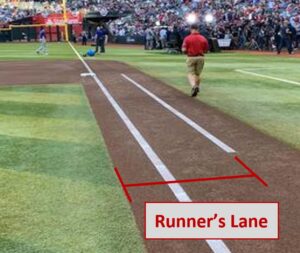One of the biggest differences between modern baseball and past versions of the game is declining starting pitcher usage. Many fans and people in the baseball world want to reverse this trend and the league is considering some rule changes that could help in that regard, per Jesse Rogers of ESPN. The most drastic change on the table is a rule that would dictate starting pitchers have to complete six innings before being removed from a game.
Such a rule would have to come with exceptions for injuries, blowouts or other extreme scenarios. Rogers reports that the league has discussed criteria where a pitcher could leave before competing six innings, such as throwing 100 pitches, allowing four or more earned runs or suffering an injury. The last one would require an IL stint in order to avoid shenanigans.
Some less-extreme suggestions have also been thrown around, such as a five-batter minimum for relievers, which could give managers more hesitation about making a move. There’s also the possibility of lowering the sizes of pitching staffs or the double-hook designated hitter system. The latter, which has been in consideration for a while, would see a team lose its DH once they remove their starting pitcher. It’s also suggested in the ESPN piece that draft pick compensation could be offered to the team with the most innings pitched by its starting staff.
It’s worth emphasizing that no changes are imminent and MLB has shown that it will experiment with potential changes in independent ball and/or the minors before bringing it to the majors. They have also tried out many changes that never made it to the big leagues, so even getting to the experimental stage is no guarantee that a new rule will eventually be implemented in the majors. If any momentum builds towards making this change a reality, teams would have plenty of warning so that they could alter how they target and develop pitchers for this new reality.
All that said, it’s not a huge secret that this shift has been happening over the years, with most baseball fans keenly aware of the trend lines when it comes to pitcher usage. Even putting aside things like bullpen games and openers, starters have just been throwing less. Just about any volume stat can illustrate this by looking at a recent season compared to one further in the past. Last year, there were five pitchers who hit the 200-inning plateau and five who threw more than one complete game. Just 20 years prior, in 2003, there were 44 hurlers who got to 200 innings and 43 who pitched at least two complete games. Go back another 20 years to 1983 and those numbers are 50 and 82.
This is due to various factors, including the fact that pitchers are less effective a third time through the order. This year, for example, hitters are slashing .238/.311/.388 the first time they see a pitcher. That jumps to .250/.311/.416 the second time and .263/.327/.437 the third time through. Bringing in a high-octane reliever is simply just a better strategy than letting the starter stay out there. This has led to the pejorative term “five-and-dive” to describe modern pitchers only concerned with throwing five innings, compared to old school pitchers who aimed to go a full nine.
Batters and teams are also more focused on power these days. Last year, there were only ten players who qualified for the batting title but finished with less than ten home runs. In 2003, there were 30 such players. In 1983, there were 46. That makes it harder for a pitch-to-contact strategy to yield positive results.
It has also been learned that a pitcher has little control over what happens once a ball is put in play, so teams have been focusing more on strikeouts. The Athletic recently ran a five-part series looking pitchers emphasizing punchouts as opposed to pitch-to-contact strategies. This has led pitchers and teams to look to maximize velocity and spin, which is thought to have had an impact on the abundance of significant injuries and surgeries for pitchers these days.
The hope is that all or many of these factors could be mitigated by the six-inning minimum. Theoretically, a pitcher would have to dial back on velocity a bit in an attempt to stay in the game longer, going back to the old school focus on getting contact with fewer strikeouts.
Along with the pitch clock and the rules to incentivize base stealing, the league is hoping for a more action-oriented game and better entertainment product. It’s also hoped that this will lead to fewer pitchers undergoing Tommy John surgery or other significant operations that require lengthy rehabilitation periods.
Whether it’s possible to actually succeed in this mission and whether this is the best way to go about it is a something that can, and surely will, be debated at length. Many fans despise the constant tinkering that has gone on during the era of commissioner Rob Manfred, while those who yearn for the prominence of the starting pitcher to return would likely be more excited about these potential developments.
